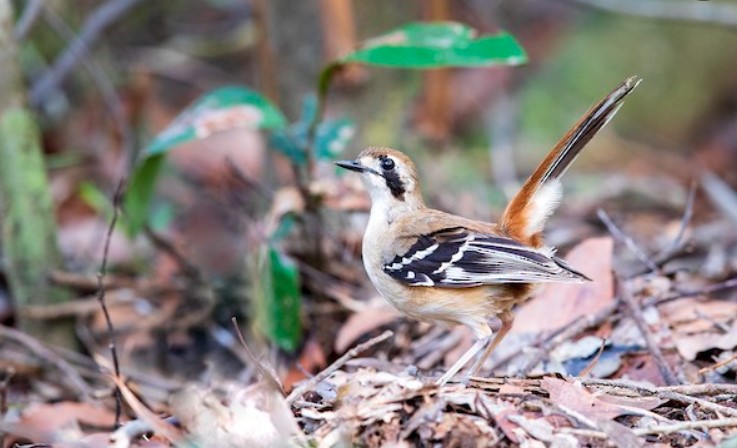Throughout the Cape York Peninsula and the hills of New Guinea, the Northern Scrub-robin inhabits the vine-hung rainforest. Across most of the Australian continent, it is isolated from its only close relative, the Southern Scrub-robin.
There may have been a time when their common ancestral stock covered much of Australia before the arid center turned into a desert. Around a century ago, two or three specimens of a paler rufous population were found on the Roper River in Arnhem Land. As of yet, no records have been discovered, suggesting that the report was a hoax or that the bird has been lost to indiscriminate burning.
On the Cape York Peninsula, these elusive birds live on the forest floor, wherever there is deep litter, open substages, and dense canopy above. During the year, they stay in a moderate-sized foraging territory. They may pair permanently or be sedentary.

Feeding mostly in the early morning and late afternoons into dusk, northern scrub-robin hop and run methodically, catching insects and small snails and leaving behind broken snail shells.
Their movements consist of crouching and running, as well as hopping from one feeding point to another. They often raise their tails, twitch them, and fan them. Their singing takes place both on the ground and on low to mid-height perches. With penetrating lisping whistles, feeding birds communicate in dispersed pairs while foraging. Both sexes share the feeding of young, and the females build nests and incubate unaided.
It is also known as Papuan Scrub-Robin. An average Northern Scrub-robin measures about 210-220 mm long. There is no significant difference between the sexes, except that the female is a little smaller. There is a cinnamon-brown upperpart, a browner crown, and a rufous rump. It has a dark brown tail, which has rufous outer feathers and a broad white tip. The wings are black with white-tipped wing coverts in two bars and a third stripe that is white-edged at the edges.
The face is white with a broad black vertical bar running from the crown to the cheek. The underparts are white with rufous-buff suffusions on the breast and flanks. The eyes are brown and the bill is black. The legs are pale pink in color.
Adult immatures are duller. Juveniles are pale brown above with white and black feather edges from the crown to the mantle. There is a dull white edge around the edges of the tail that is russet. Underparts are cream-buff with brown flecks on the breast and throat; the vertical black eye stripe is faded.







